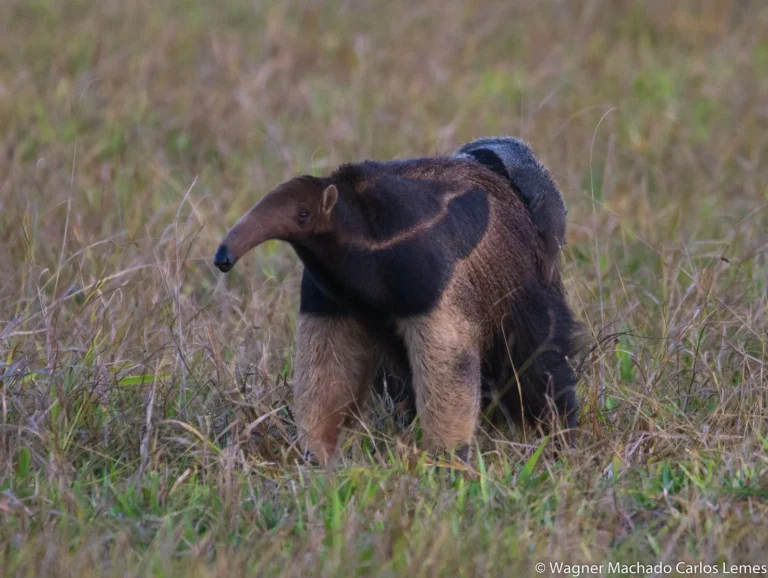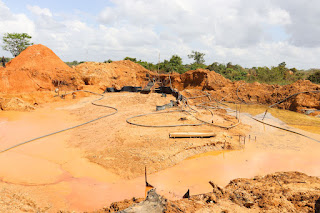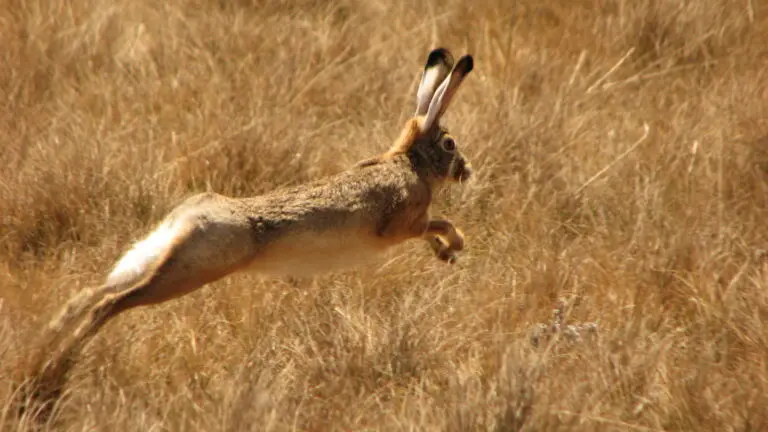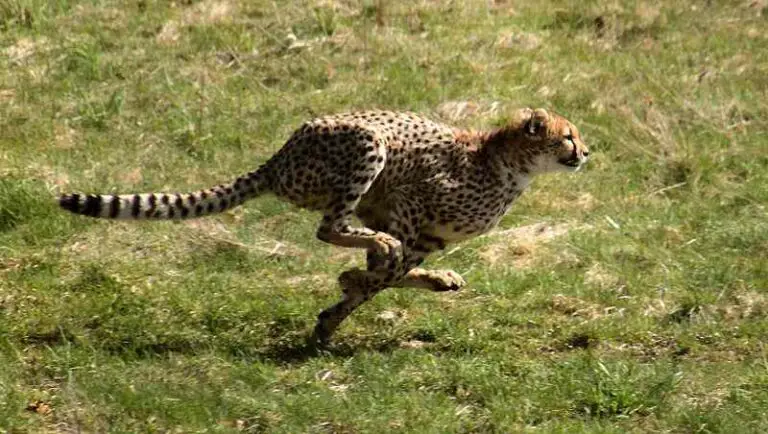Desert Definition, Description, and List Discussed
Desert is an ecosystem with less than 10 inches annual rainfall, broad daily temperature variation, and low biodiversity. This article discusses desert definition, description, and list, as outlined below;
-Desert Definition: 5 Ways to Define the Desert Biome
Desert Definition: 5 Ways to Define the Desert Biome
A desert is an ecosystem or biome that typically receives little annual precipitation and has relatively low species richness and biodiversity [1].
What is given above is a most basic definition of the desert biome, which mentions its lack of water as a core characteristic.
For in-depth understanding of what deserts are, it is helpful to highlight multiple characteristics of deserts. The alternative desert definition below does this;
A desert is a barren area of land that is characterized by less than 25 cm (10 inches) annual precipitation, low biodiversity, significant daily temperature variations (-3.9 - 38.0 °C), high winds, drought, specialized geographic features, aeolian erosion and weathering, fine-grained sand, and highly-adapted organisms.
The characteristics of deserts are very unique, and differentiate them effectively from other types of ecosystems like forests, grasslands and tundras. The same characteristics can also be used to distinguish between the different types of deserts; which are listed in the following desert definition;
A desert is an ecosystem with low humidity, precipitation and biodiversity, which can be distinguished based on its characteristics into various types that include; coastal, cold/polar, interior/intra-continental, subtropical, rain shadow, hot and dry, and semiarid deserts
Based on their primary attributes, it can be deduced that deserts occur only in certain parts of the world. The following desert definition mentions some key desert locations;
Desert refers to a high-moisture-deficit landscape with features like low precipitation and sparse vegetation, that is found mostly between 15° and 35° north and south of the equator, and occurs in regions like; Africa, Australia, Central America North America, as well as Eastern, Western and Southern Asia [2].
Lastly, an alternative desert definition is given below, which lists some examples of deserts in the world;
A desert is an ecologic zone with distinctive climate, low moisture and low biological productivity, examples of which include; Arctic, Antarctic, Atacama, Gobi, Kalahari, Mojave, Sahara and Sonoran deserts.
Description of Desert Biome
The description of desert biome must include; low precipitation, significant daily temperature changes, low biodiversity, and notable aeolian processes. Each of these key points in the description of desert biome is discussed briefly below;
1). Low Precipitation (as a Key Factor in the Description of Desert Biome)
The desert is unique among other biomes for its low precipitation and general humidity levels.
Deserts are defined by very low precipitation which does not exceed 250 millimeters (that is; 25 cm or 10 inches) per annum. This is even less than that of other low-humidity ecosystems like tundras.
Deserts have low precipitation because of a combination of intensive solar heating and wind-convection dynamics, which causes air currents from the hinterland to lose nearly all moisture before reaching the desert, so that evaporation rates greatly exceed water recharge rates.
Both climatic and geographic factors play separate roles to establish the low-precipitation conditions of a desert. Climatic factors here include the effects of solar radiation and air currents on environmental temperature and humidity; whereas geographic factors refer to the relative proximity of most deserts to the equatorial zone, and their general distance from the world's oceans.
The precipitation levels of deserts contribute to many of their common attributes, like low biodiversity, and prominent aeolian activity.
2). Significant Daily Temperature Changes
Deserts can be described on the basis of their daily temperature variations, which is generally significant.
Daily temperature changes in the desert range from approximately -3.9°C at night, to about 38-40°C in the day [5]. Deserts have such a large range of daily temperature because of the presence of active, dry winds that are unable to retain heat from daytime solar radiation, as well as due to the absence of vegetation, soil moisture and water bodies which could serve as natural energy storage systems for heat.
As a result, intense heat from equatorial sunlight in the day will generally dissipate at a rapid rate as the sun goes down.
3). Low Biodiversity (as a Key Factor in the Description of Desert Biome)
The desert has low biodiversity, meaning that the number and richness of species in deserts is low compared to other ecosystems.
Deserts have low biodiversity because of the harsh environmental conditions, which are unsuitable for most organisms and do not support their survival.
In general, the biodiversity of deserts increases as the level of aridity reduces.
Because vegetation growth is very sparse, producers (plants) are few in the energy pyramid of a desert, and since these organisms are the main source of bioenergy to the ecosystem, their sparseness implies that there is little amount of food.
Desert animals are highly-adapted to the arid conditions and the lack of vegetative shelter, so that only species with favorable physiological and behavioral characteristics can survive.

4). Notable Aeolian Processes
Aeolian processes refer to processes that are dominated by air currents, or wind.
In deserts, the three main aeolian processes which occur are; wind erosion, transport and deposition.
Two processes by which aeolian erosion occurs in the desert are; abrasion, which is the mechanical grinding and wearing-away of rocks using wind-borne particles; and deflation, which is the dislodging and removal of lose rock and earth materials before they are transported by wind [3].
Processes by which aeolian transport occurs in a desert include; suspension, surface creep, and saltation.
The main byproduct of aeolian processes in deserts is dust, which can be a cause of air pollution and dust-storm hazards in such areas [4]. Aeolian erosion, transport and deposition result in some geographic features which are typical of the desert biome, such as yardang, zeugen, ventifacts, loess and barchan dunes.

List of Deserts in the World
A list of deserts in the world (largest deserts) is given as follows;
Desert Name | Desert Location(s) (Continental) | Desert Locations (National) |
Antarctic Desert | Antarctica | Antarctica |
Arctic Desert | Eastern Europe, Northern America, Northern Asia, Northern Europe | Canada, Finland, Greenland, Iceland, Jan Mayen, Norway, Russia, Svalbard, Sweden, United States |
Arabian Desert | Western Asia | Western Asia Iraq, Jordan, Kuwait, Oman, Qatar, Saudi Arabia, United Arab Emirates, Yemen |
Atacama Desert | South America | Chile, Peru |
Chalbi Desert | Eastern Africa | Kenya |
Chihuahuan Desert | Northern America | Mexico, United States |
Colorado Plateau | Northern America | United States |
Columbia Basin | Northern America | Canada, United States |
Danakil Desert | Eastern Africa | Djibouti, Eritrea, Ethiopia |
Dash-e Kavir | Southern Asia | Iran |
Dasht-e Lut | Southern Asia | Iran |
Dash-e Margo | Southern Asia | Afghanistan |
Ferlo Desert | Western Africa | Senegal |
Gobi Desert | Eastern Asia | China, Mongolia |
Great Australian Desert | Australia | Australia |
Great Basin | Northern America | United States |
Great Victoria Desert | Australia | South Australia, Western Australia |
Guban Desert | Eastern Africa | Somalia, Somaliland |
Kalahari Desert | Southern Africa | Botswana, Namibia, South Africa |
Karakum Desert | Central Asia | Turkmenistan |
Kyzylkum Desert | Central Asia | Kazakhstan, Turkmenistan, Uzbekistan |
Ladakh Desert | Southern Asia | India |
Mojave Desert | Northern America | United States |
Namib Desert | Central, Southern Africa | Angola, Namibia, South Africa |
Ogden Desert | Eastern Africa | Ethiopia, Somalia, Somaliland |
Patagonian Desert | South America | Argentina |
Puntland Desert | Eastern Africa | Somalia |
Registan Desert | Southern Asia | Afghanistan |
Sahara Desert | Eastern, Central, Northern, Western Africa | Algeria, Egypt, Eritrea, Libya, Mali, Mauritania, Morocco, Niger, Sudan, Tunisia, Western.Sahara |
Sonoran Desert | Central, Northern America | Mexico, United States |
Syrian Desert | Western Asia | Iraq, Jordan, Saudi Arabia, Syria |
Taklamakan Desert | Eastern Asia | China |
Thar Desert | Southern Asia | India, Pakistan |
Ustyurt Plateau | Central Asia | Kazakhstan, Turkmenistan, Uzbekista |
Conclusion
A desert is an area, region or biome that has low rainfall, humidity, biodiversity, and prominent aeolian activity.
A thorough description of desert biome must include key attributes like;
1. Low Precipitation
2. Significant Daily Temperature Changes
3. Low Biodiversity
4. Notable Aeolian Processes
References
1). Fei, C.; Dong, Y. Q.; An, S. Z. (2022). "Factors driving the biomass and species richness of desert plants in northern Xinjiang China." PLoS One. 2022 Jul 22;17(7):e0271575. Available at: https://doi.org/10.1371/journal.pone.0271575. (Accessed 8 April 2023).
2). Kummu, M.; de Moel, H.; Ward, P. J.; Varis, O. (2011). "How close do we live to water? A global analysis of population distance to freshwater bodies." PLoS One. 2011;6(6):e20578. Available at: https://doi.org/10.1371/journal.pone.0020578. (Accessed 8 April 2023).
3). Laity, J. E. (1994). "Landforms of Aeolian Erosion." In: Abrahams, A.D., Parsons, A.J. (eds) Geomorphology of Desert Environments. Springer, Dordrecht. Available at: https://doi.org/10.1007/978-94-015-8254-4_19. (Accessed 8 April 2023).
4). Laity, J. E. (2009). "Landforms, Landscapes, and Processes of Aeolian Erosion." In: Parsons, A.J., Abrahams, A.D. (eds) Geomorphology of Desert Environments. Springer, Dordrecht. Available at: https://doi.org/10.1007/978-1-4020-5719-9_19. (Accessed 8 April 2023).
5). Rewald, B.; Amir, E.; Shelef, O.; Hill, A.; Degu, A.; Fruedjung, A.; Rachmilevitch, S. (2012). "Hot desert environments." Life at extremes - Environments, organisms and strategies for survival (pp.196-218). Available at: https://doi.org/10.1079/9781845938147.0196. (Accessed 8 April 2023).




